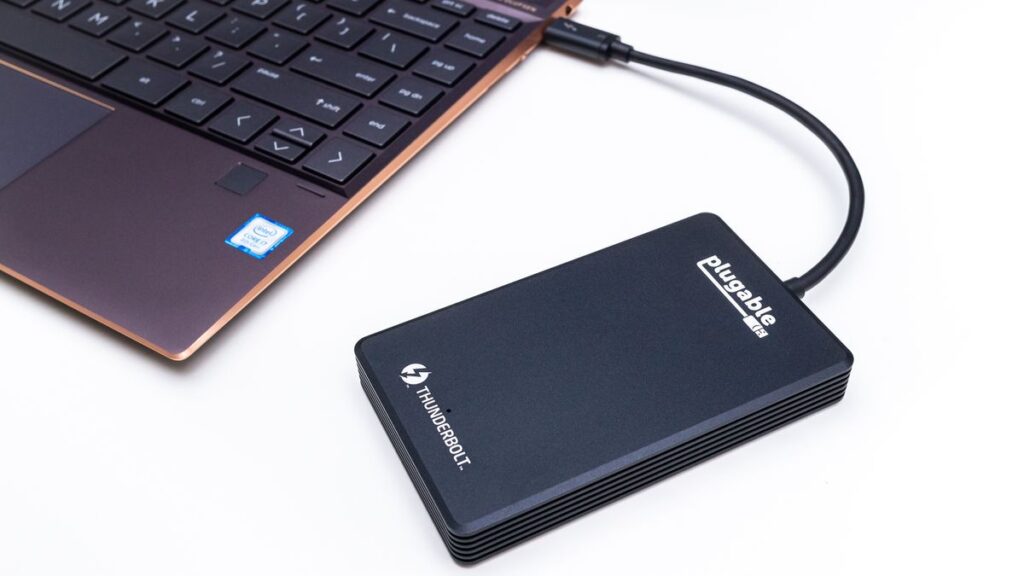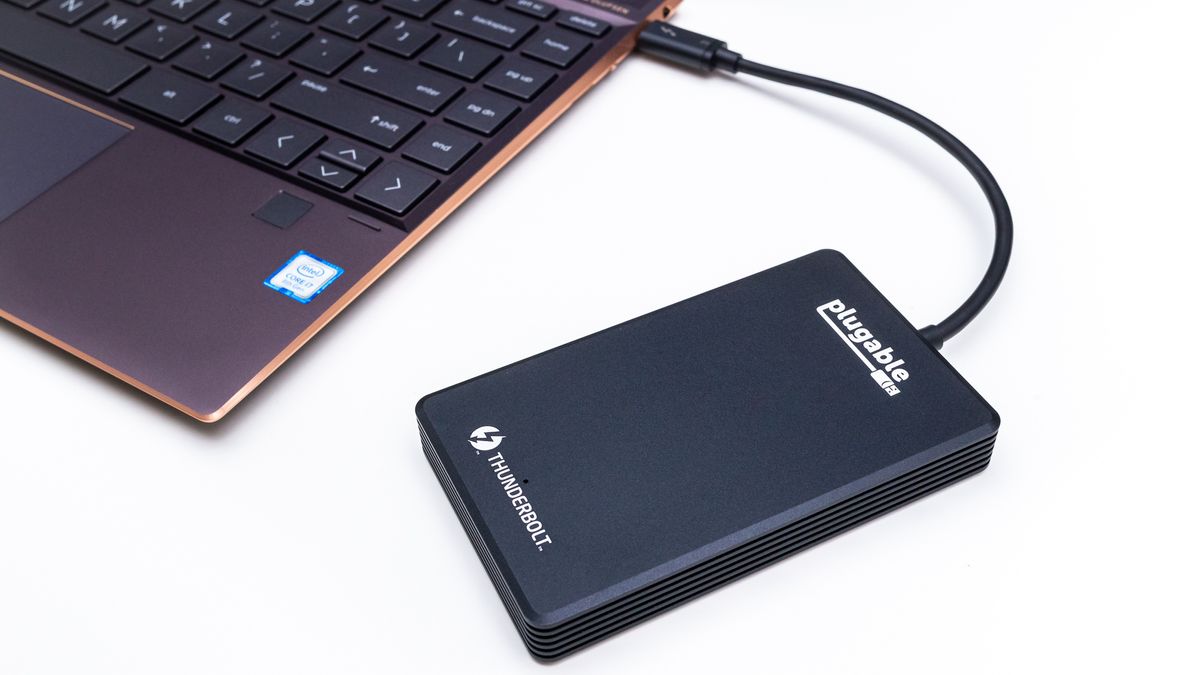
Unleashing Speed: A Deep Dive into Thunderbolt 3 SSD Drives
In today’s fast-paced digital landscape, the need for rapid data transfer and storage solutions is paramount. Professionals and enthusiasts alike are constantly seeking ways to optimize their workflows and minimize downtime. Enter the Thunderbolt 3 SSD drive, a game-changer in the realm of external storage. This article will explore the capabilities, benefits, and considerations surrounding Thunderbolt 3 SSD drives, offering a comprehensive guide for anyone looking to upgrade their storage solutions.
Understanding Thunderbolt 3 Technology
Before diving into the specifics of Thunderbolt 3 SSD drives, it’s essential to understand the underlying technology. Thunderbolt 3 is a high-speed interface developed by Intel in collaboration with Apple. It utilizes the USB-C connector, offering a theoretical maximum bandwidth of 40 Gbps (Gigabits per second). This is significantly faster than previous generations of USB and Thunderbolt, enabling incredibly quick data transfers.
Key features of Thunderbolt 3 include:
- High Bandwidth: 40 Gbps allows for simultaneous data and video transfer.
- USB-C Connector: Universal connector for data, video, and power delivery.
- Daisy Chaining: Connect multiple devices in a series from a single Thunderbolt 3 port.
- Power Delivery: Supports charging laptops and other devices.
The Advantages of Thunderbolt 3 SSD Drives
Combining the speed of Thunderbolt 3 with the performance of solid-state drives (SSDs) creates a powerful storage solution. Thunderbolt 3 SSD drives offer several key advantages over traditional hard disk drives (HDDs) and older generation SSDs:
- Blazing Fast Transfer Speeds: Experience significantly faster read and write speeds compared to HDDs. This translates to quicker file transfers, faster application loading times, and improved overall system responsiveness.
- Durability and Reliability: SSDs have no moving parts, making them more resistant to physical shock and vibration. This makes Thunderbolt 3 SSD drives ideal for on-the-go professionals and users who require rugged storage solutions.
- Compact and Portable: Thunderbolt 3 SSD drives are typically smaller and lighter than traditional external hard drives, making them easy to carry around.
- Silent Operation: SSDs operate silently, eliminating the noise associated with spinning hard drives.
- Lower Latency: SSDs offer significantly lower latency than HDDs, resulting in faster access times and improved performance in demanding applications.
Use Cases for Thunderbolt 3 SSD Drives
Thunderbolt 3 SSD drives are well-suited for a wide range of applications, including:
- Video Editing: Edit high-resolution video footage directly from the drive without performance bottlenecks.
- Photography: Quickly transfer and back up large image files.
- Gaming: Load games faster and enjoy smoother gameplay.
- Software Development: Compile code and run virtual machines more efficiently.
- Data Backup and Recovery: Create fast and reliable backups of important files.
- On-the-Go Professionals: Provide a portable and high-performance storage solution for photographers, videographers, and other professionals who work remotely.
Choosing the Right Thunderbolt 3 SSD Drive
With a wide variety of Thunderbolt 3 SSD drives available on the market, it’s important to consider several factors when making a purchase:
- Capacity: Determine the amount of storage space you need based on your intended use.
- Speed: Check the read and write speeds to ensure the drive meets your performance requirements. Look for drives that can sustain high speeds during prolonged use.
- Form Factor: Consider the size and portability of the drive. M.2 NVMe drives in enclosures are usually the smallest and fastest.
- Price: Thunderbolt 3 SSD drives can range in price depending on capacity, speed, and features. Set a budget and compare different options.
- Brand Reputation: Choose a reputable brand known for quality and reliability.
- Warranty: Check the warranty period and terms to ensure you’re protected against defects.
- Enclosure Material: An aluminum enclosure helps with heat dissipation and durability.
Understanding SSD Technology
Solid State Drives (SSDs) store data on flash memory chips, unlike traditional Hard Disk Drives (HDDs) which use spinning platters. This fundamental difference leads to the superior performance characteristics mentioned earlier. Within the realm of SSDs, there are different types of flash memory, such as:
- SLC (Single-Level Cell): Offers the highest performance and endurance but is the most expensive.
- MLC (Multi-Level Cell): A good balance of performance, endurance, and cost.
- TLC (Triple-Level Cell): More affordable but has lower performance and endurance compared to SLC and MLC.
- QLC (Quad-Level Cell): The most affordable option but offers the lowest performance and endurance.
Most consumer-grade Thunderbolt 3 SSD drives utilize TLC or QLC NAND flash memory to keep costs down. However, high-end models may use MLC or even SLC for enhanced performance and longevity.
NVMe vs. SATA
When considering Thunderbolt 3 SSD drives, you’ll often encounter the terms NVMe (Non-Volatile Memory Express) and SATA (Serial ATA). These are different interface protocols that dictate how the SSD communicates with the host system.
NVMe is a newer and more efficient protocol designed specifically for SSDs. It offers significantly higher performance than SATA, which was originally designed for HDDs. Thunderbolt 3 SSD drives typically utilize NVMe SSDs to take full advantage of the interface’s bandwidth.
SATA-based SSDs are still available, but they are generally slower and less expensive than NVMe SSDs. While you can technically connect a SATA SSD to a Thunderbolt 3 port using an adapter, you won’t get the full performance benefits of Thunderbolt 3.
Setting up Your Thunderbolt 3 SSD Drive
Setting up a Thunderbolt 3 SSD drive is usually a straightforward process:
- Connect the Drive: Plug the Thunderbolt 3 SSD drive into a Thunderbolt 3 port on your computer.
- Driver Installation: In most cases, the drive will be automatically recognized by your operating system. If not, you may need to install drivers from the manufacturer’s website.
- Formatting the Drive: If the drive is new, you may need to format it before you can use it. Choose a file system that is compatible with your operating system (e.g., NTFS for Windows, APFS for macOS).
- Start Using the Drive: Once the drive is formatted, you can start transferring files and using it for your intended purpose.
Troubleshooting Common Issues
While Thunderbolt 3 SSD drives are generally reliable, you may encounter some issues from time to time. Here are some common problems and potential solutions:
- Drive Not Recognized: Make sure the drive is properly connected and that the Thunderbolt 3 port is functioning correctly. Try a different Thunderbolt 3 cable or port. Update your Thunderbolt drivers.
- Slow Transfer Speeds: Ensure that you are using a Thunderbolt 3 port and not a regular USB-C port. Check the drive’s specifications to see if it’s performing as expected. Close any unnecessary applications that may be consuming system resources.
- Overheating: Some Thunderbolt 3 SSD drives can get hot during prolonged use. Make sure the drive has adequate ventilation. Consider using a drive with an aluminum enclosure for better heat dissipation.
- Data Corruption: Regularly back up your data to protect against data loss due to drive failure or other issues.
The Future of Thunderbolt 3 SSD Drives
The future of Thunderbolt 3 SSD drives looks bright. As technology continues to evolve, we can expect to see even faster transfer speeds, larger storage capacities, and more advanced features. The emergence of Thunderbolt 4, while maintaining the same 40 Gbps bandwidth, focuses on improved minimum performance requirements and enhanced security features. While not necessarily increasing the raw speed of Thunderbolt 3 SSD drives directly, Thunderbolt 4 ensures a more consistent and reliable experience.
Furthermore, the cost of SSDs is expected to continue to decline, making Thunderbolt 3 SSD drives more accessible to a wider range of users. We can also anticipate the development of more rugged and portable designs, catering to the needs of professionals who work in demanding environments. [See also: Best External SSD for Video Editing]
Conclusion
Thunderbolt 3 SSD drives offer a compelling combination of speed, portability, and reliability, making them an excellent choice for anyone who needs high-performance external storage. Whether you’re a video editor, photographer, gamer, or simply someone who wants to speed up their workflow, a Thunderbolt 3 SSD drive can significantly improve your productivity and overall computing experience. By carefully considering your needs and budget, you can find the perfect Thunderbolt 3 SSD drive to meet your specific requirements.

